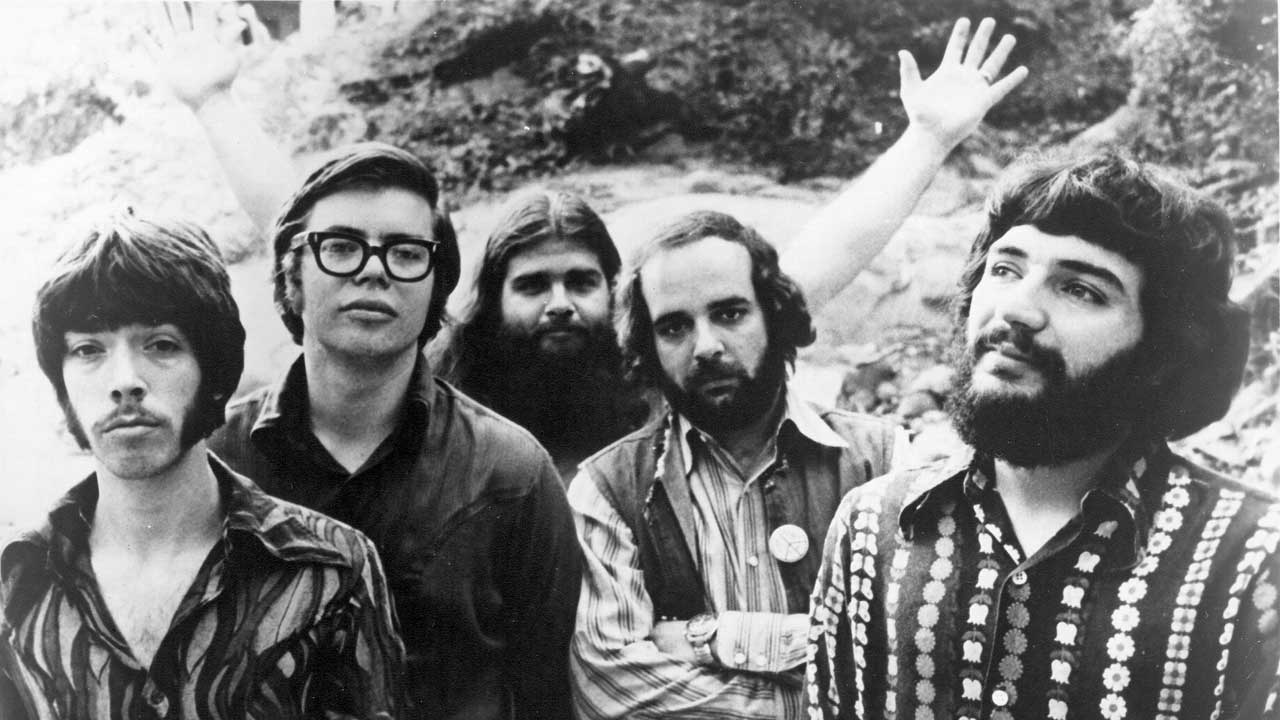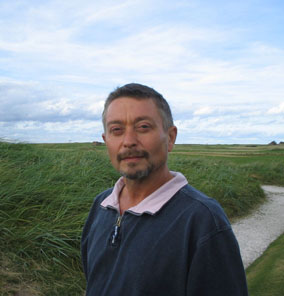Midnight is approaching in LA, and outside the Palomino Club in North Hollywood, the members of Canned Heat and their entourage are kicking back in the yard. It’s April 4, 1981. The band have just finished their first set of the night, and are passing joints around before they return to the stage for round two.
The Heat’s glory days are long behind them. Back in the day, they were one of the biggest and best American bands around; an electrifying, boogiefied update of the blues dressed in filthy dungarees and biker boots. As the 60s neared its close and the Age Of Aquarius was in full swing, Canned Heat were singing about Going Up The Country or being On The Road Again. Weird times. Good times.
It’s not like that any more. In truth, the Canned Heat of 1981 aren’t the band they used to be. They haven’t been since September 1970, when Alan ‘Blind Owl’ Wilson – guitarist, co-founder and the band’s beating musical heart – died in mysterious circumstances near their lead singer’s house.
Despite it all, the Heat still know how to have a good time if nothing else. There’s a maniacal crew gathered around them: outlaws, banditos, Hells Angels, hangers-on…. At the centre of it is their vocalist and harmonica player, Bob ‘The Bear’ Hite. With his scraped-back black ponytail and gut-length beard, the 38-year-old is 300lbs of Californian gregariousness and pharmaceutical fearlessness.
The Bear is already sky-high. Before the show, he and his wife Susan, another hopeless drug addict and alcoholic, had injected a gram of cocaine apiece before scouring their ramshackle apartment for anything else they could ingest to numb the pain.
In the Palomino’s yard, a man who will later be identified as a former Israeli tank commander sidles up to Hite. The Israeli is carrying smack – pink Persian gear that is not to be trifled with. He pulls out a vial and offers the singer a little taste.
The Bear is famous for accepting anything that’s thrust under his nose or stuffed into his mouth, so this is nothing unusual. But Canned Heat’s drummer Adolfo ‘Fito’ de la Parra (aka Ojos de Gatos, or Cat’s Eyes – all the band have their own nicknames) recognises the Israeli and is concerned. “Careful bro,” Fito warns his bandmate. “His trash is strong.”
The Bear brushes off his bandmate’s advice. “This shit ain’t even gonna get me high,” he boasts. Hite doesn’t take a little taste of the smack. Instead, he grabs the vial and snorts up its entire contents. Within seconds, all 300lbs of Bob Hite is crashing to the floor. He begins turning blue, the first sign of an OD. Someone tries to revive him with two huge lines of coke. Like a junkie on autopilot, The Bear manages to snort them both, but remains unconscious.
Canned Heat leave their comatose singer in the dressing room before resuming their show. They’ve seen him in this state before. Years of outrageous chemical abuse, junk food and morbid obesity have taken their toll on The Bear. This isn’t the first time he’s collapsed, and his bandmates assume it won’t be the last.
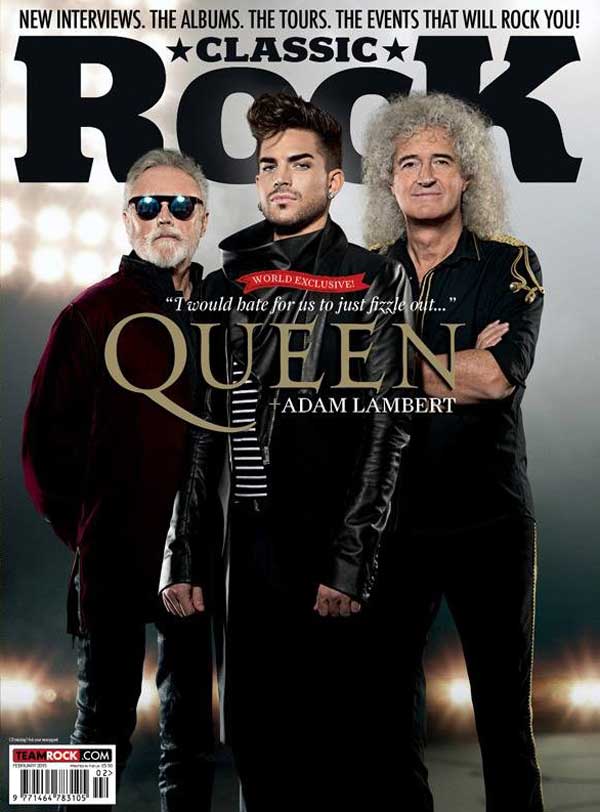
But this time it’s different. What no one knows is that The Bear’s heart has stopped. Before the band takes the stage, someone suggests they move the singer. The last Fito sees of his friend is him being dragged through the dirt by his ankles.
As The Bear’s comatose body is bundled into the back of the van to take him to Fito’s place in Mar Vista, the band’s manager, a tattooed biker named Ray ‘The Push’ Chambers, is determined to find the motherfucker who gave The Bear heroin and beat the shit out of him. But it’s too late – the Israeli tank commander has vanished into the Hollywood hills.
“He’d collapsed so many times before, ” recalls Fito de la Parra today. “Drugs usually. So we were used to leaving him when he passed out on stage. Who can lift a 300lb man? Every other time he’d wake up in the morning and say, ‘What the fuck happened?’… Er, you got wasted again.”
Except The Bear doesn’t wake up the next morning. In the early hours of April 5, while Canned Heat are closing their second set with the 40-minute jam Fried Hockey Boogie, Hite dies in the back of the van that’s delivering him to Fito’s house.
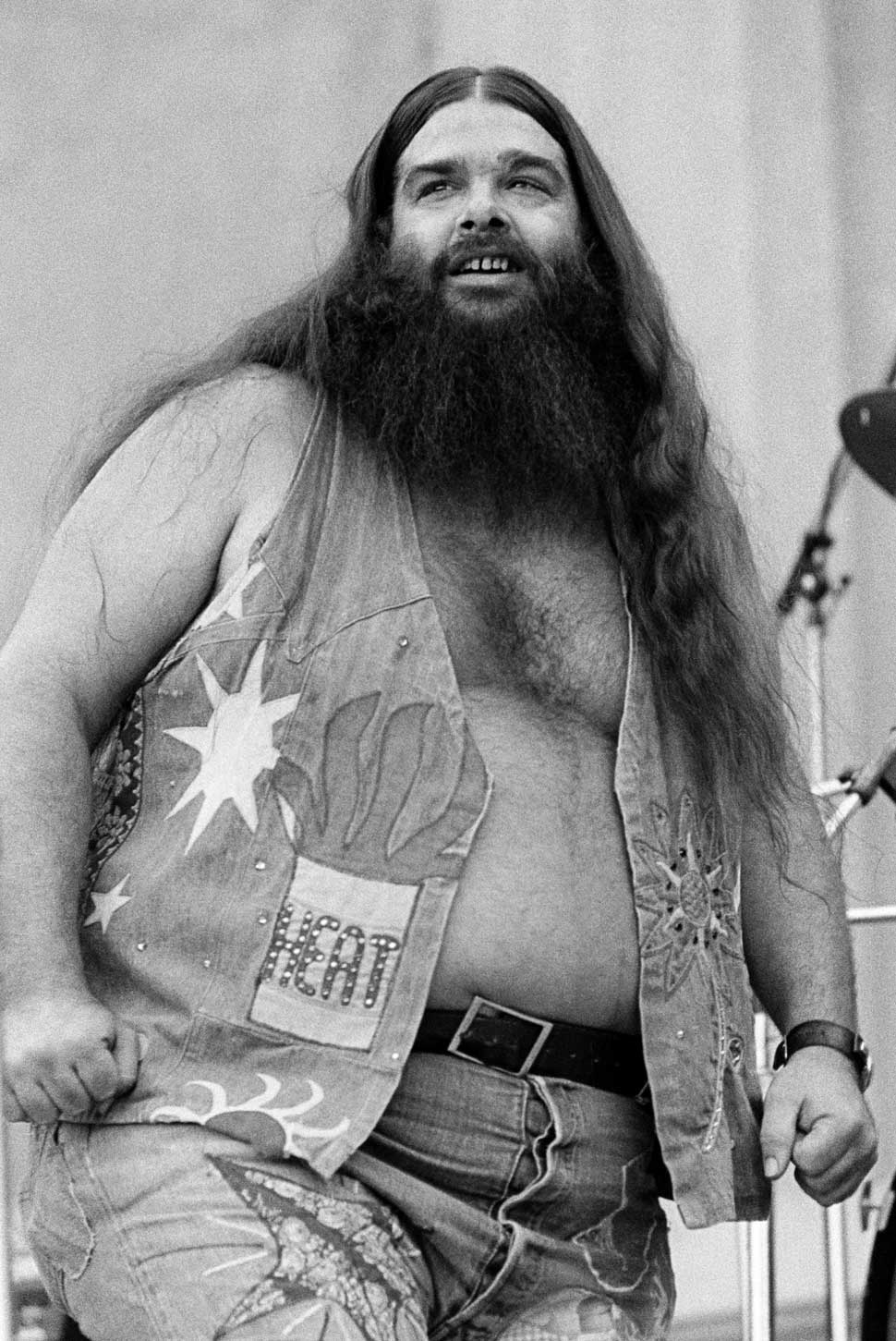
Within hours, Fito, The Push and guitarist Henry ‘The Sunflower’ Vestine call a pow-wow to decide the future of the band. Vestine would like to weep at the death of his friend and bandmate, but he’s too high on the psychedelic amphetamine STP to emote. Not so The Push. The manager partakes of his usual breakfast: a quart of mayonnaise comes out of his leather bag, followed by a jar of pure speed, which he tips into a large glass of Pepsi. Chambers smothers a whole chicken with the mayo and demolishes the lot, washed down with the fizz. “Too bad about Bob” he says. “But heroin is for losers.”
Hite’s death is a shock, but perhaps not as much of a shock as it might have been if they hadn’t already lost one key member 11 years earlier. It doesn’t take long for them to come to a group decision. Canned Heat survived the death of one member. They can survive the death of another.
Bob Hite is dead, but the Heat is not. Callous? Not according to Fito de la Parra. “It was what The Bear would have wanted,” says the drummer. “Don’t forget, to boogie was his thing.”

The story of Canned Heat is one of unlikely triumph and almost predictable tragedy. During their peak in the late 60s, this most elemental of bands ran against the counter-cultural grain.
Where their contemporaries span off in ever-increasing lysergic circles, the Heat were blues’n’boogie evangelists, connecting American music’s past with its present in near-scholarly fashion. Their best known-hits, On The Road Again, Going Up The Country (both 1968), Let’s Work Together (1970), remain well-loved radio staples, even if the band’s greatest albums – Boogie With Canned Heat, Living The Blues, Hallelujah, Future Blues, all released between 1968 and ’70 – have been all but forgotten today.
But the Canned Heat story is about more than just their music. It’s impossible to separate the band from the fates of their two key members. Alan ‘Blind Owl’ Wilson and Bob ‘The Bear’ Hite may have died 11 years apart, but they embody the dark side of the 60s as much as Jimi, Janis or any other casualty of the era. The difference is that they had no posthumous lustre bestowed on their reputation.
Canned Heat haven’t been fashionable since their heyday. But their classic line-up of Wilson, Hite, Fito, Vestine and bassist Larry ‘The Mole’ Taylor possessed such integrity and authenticity that the band deserves to be revaluated. Making sense of their messy and tragic back story, however, is another matter altogether.
The two men at the centre of that tale couldn’t have been more different, physically or temperamentally. Bob Hite was born in Torrance, California, to parents who were both amateur musicians. He latched onto the blues before he entered his teens, swiftly amassing an impressive record collection.
“Bob was the first person I met who was as much into record collecting as I was,” recalls Barry Hansen, who met Hite at a Lightnin’ Hopkins show and would later achieve fame as radio broadcaster Dr Demento. “He already had a fine collection at that time, a couple of thousand 78s, with a fair number of Paramounts and other pre-war goodies, along with near-complete runs of Muddy Waters and the like, and also several thousand 45s.”
Hite was also a roaring extrovert who always wanted people around him. He was from a blue-collar family: both his parents were overweight; even their dog, a miniature Doberman, was fat. His parents were also religious, and would sing hymns every night before bedtime.
“That’s not where Bob got his singing talent, though,” says Hansen. “He taught himself by singing along with his records. Bob was a showman. He could put a record on the turntable with such amazing flair. When Canned Heat formed he was the natural frontman and a natural bandleader.
What Hite wasn’t, though, was a natural songwriter. Fortunately, Alan Wilson was. A former music major at Boston University, the Massachusetts-born Wilson had an encyclopaedic knowledge of the blues. He had performed solo on Boston’s coffee house circuit, before moving to California in the summer of 1965 to help his friend, the guitarist John Fahey, complete a thesis on delta blues pioneer Charley Patton at UCLA. It was Fahey who christened Wilson ‘Blind Owl’, due to his chronic myopia and academic leanings.
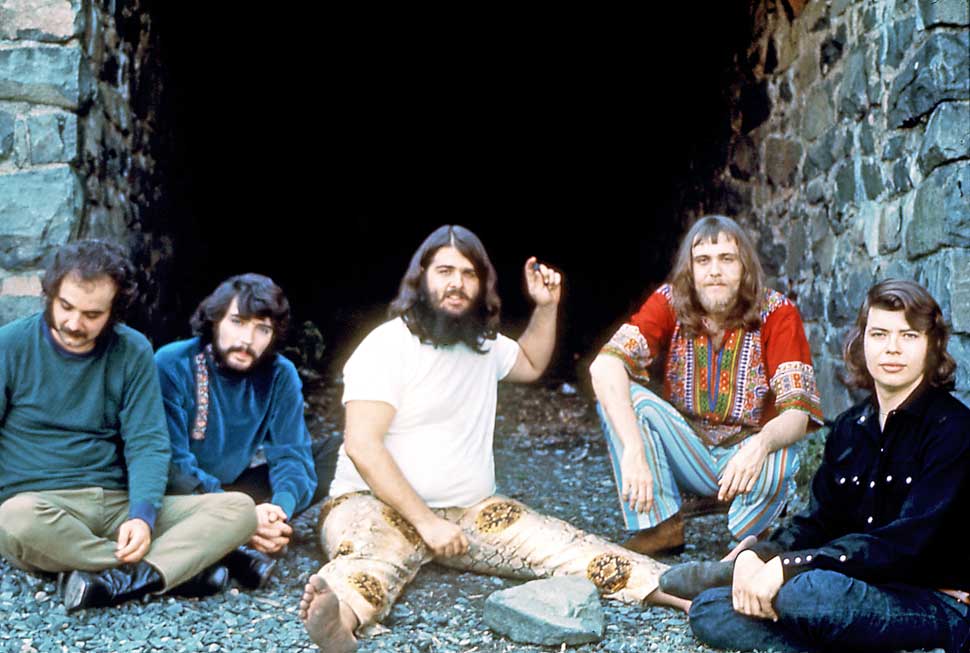
Wilson was just as fervent about the blues as Bob Hite. In 1964, the 20-year-old musician had tracked down forgotten blues pioneer Son House and, at the request of producer John Hammond Sr, taught the old man “how to play like Son House again”. House’s 1965 album Father Of The Delta Blues featured Wilson on guitar and harmonica, and the pair would play together again in subsequent years.
When Wilson and Fahey arrived in LA, they met Hite. Wilson took his guitar to his future bandmate’s place, where Hite began singing along with old blues records. “Alan showed Bob he could play the guitar parts, and they started making music together,” recalls Hansen.
Alan Wilson was as introverted as Bob Hite was extroverted. Wilson was a keen amateur scientist and early eco-warrior who collected leaves and soil samples. Nature fascinated him to the point of obsession, as did music. Highly intellectual, Wilson could carry on a discussion about many kinds of music, not just blues, and had a special interest in Indian classical music, which would eventually manifest itself in On The Road Again.
That song was based on a Floyd Jones remake of Tommy Johnson’s 1928 lament, Big Road Blues. Another Johnson number, Canned Heat Blues, also provided Wilson and Hite with a name for their new band. ‘Canned Heat’ was a nickname for Sterno, the ethanol and methanol-based cooking fuel that poor folks drank in order to get high, with often-fatal results. Wilson and Hite didn’t know it at the time, but the lethal origin of their name would prove bitterly ironic.
The pair may have had the ambition, the ideas and the record collections, but it took a while for them to get their band off the ground. In their original incarnation, Canned Heat were a bluesy jug band. But no one wanted a bluesy jug band in California in 1965.
“The first year we were together, we worked for three weeks. We’d get a gig, play three days and get fired,” Alan Wilson told one journalist in 1968. “Because we weren’t a jukebox,” added Hite.
Their struggles extended to the studio. They recorded a set of blues numbers, including Muddy Waters’ Rollin’ And Tumblin’ and Willie Dixon’s Spoonful, plus two of their own originals with producer Johnny Otis in 1966, only for the songs to be shelved (they would eventually be released in 1970 as the Vintage album).
The line-up took time to settle around Hite and Wilson. It was only when they recruited guitarist Henry Vestine in late 1965 that things began to come together. The son of a NASA scientist, Vestine was a middle-class kid who hung out with bikers – something that showed in his filthy clothes and drug habits. He was a miscreant of such epic proportions that Frank Zappa had booted him out of The Mothers Of Invention. Though he was no user himself, Zappa usually tolerated his musicians’ chemical foibles, but Vestine’s habits were absurd.
Zappa’s loss was Canned Heat’s gain. Tall, blond and permanently stoned, Vestine was nicknamed ‘The Sunflower’ because of the way he swayed while he played. Wilson hired him after catching him playing a set of instrumentals in a surf bar, which included a half-hour John Lee Hooker jam. Like his new bandmates, Vestine was an affirmed bluesologist with an extensive record collection.
One musician who passed briefly through the ranks was future Heart bassist Mark Andes, who was playing with Spirit at the time. He was introduced to Canned Heat by Barry Hansen, and played with them at the Human Be-In, a famous gig-come-pro-LSD ‘happening’ held in San Francisco in 1967.
“I got my PhD in the blues from those guys: Alan, Bob, Henry Vestine, the original drummer Frank Cook,” says Andes now. “We played a lot of boogie in F sharp which was Henry Vestine’s favourite key. I thought they were all very studious, unlike their later biker image. They did take a stupid lot of drugs though…”
Skip Taylor was Canned Heat’s manager from 1966 until their initial split in 1973, as well as the producer of their best albums. The first time he saw Canned Heat was at a UCLA frat party in late 1965. At the time, he was working for entertainment industry heavyweights the William Morris Agency, representing clients such as the Rolling Stones and the Beach Boys.
“I turned up to this party and The Doors were playing,” recalls Taylor, speaking from his home in Tucson, Arizona. “This is when Jim Morrison was still so shy he hid in the dark and recited the lyrics. The Doors were clean cut, wearing dress shirts, and they had smart haircuts. Then Canned Heat amble on, wearing filthy, grease-stained work clothes and dirty boots, and they started playing blues. These UCLA kids don’t know what’s going on. Chances are they’ve never heard the blues and their jaws drop. They’re dumbfounded.”
Suitably impressed, Taylor pursued both bands. He brokered The Doors’ Elektra deal in 1966, though he missed out on the chance to manage Jim Morrison and co. Instead, he threw in his lot with Canned Heat – though not before being sacked by the Morris Agency for neglecting his desk and taking too many drugs.
“Me and my partner, John Hartmann, took them to all the labels in town looking for a deal but no one bit,” he says. “So in exasperation I had a load of bumper stickers printed up with their name on, which we stuck to every car in the parking lot at every company in LA. It was a masterstroke. People started asking questions: ‘What is Canned Heat?’”
It was singer-songwriter Jackie DeShannon who swung it for Taylor and his new charges. DeShannon saw the band playing in a club, and persuaded Liberty Records president Al Bennett to sign them. Thanks to Taylor’s gonzo business acumen, Bennett offered a generous deal: Canned Heat would receive 50 per cent on their publishing.
A lot of their money went on narcotics. The band were heavy drug users from the off. The effervescent Hite rented a mansion in the Hollywood Hills, where Elvis Presley had lived when he made some of his movies. Serious partying was the order of the day, with plenty of drugs and women for all.
After a few months, Hite moved the group to another house on Topanga Canyon Blvd, down the road from the Elysium commune, where nudity and free love were on the menu. A place well known to criminal cult leader Charles Manson and his disciples, Elysium was a magnet for the burgeoning hippie movement. Canned Heat enjoyed its bohemian country club atmosphere. But their love of hedonism was in inverse proportion to the care they took over their image – Vestine, in particular, was permanently covered in motorcycle grease – and Canned Heat were a world away from their dandy psychedelic peers.
“None of them paid much attention to clothing or grooming,” recalls Barry Hansen, who roadied for the band. “They just went onstage in their street clothes. Someone at Liberty suggested they all wear overalls, thinking that’s what people in the delta wore. So they wore overalls on their first Bay Area tour. Part of my job was to find a laundromat and wash them. Of course, black bluesmen generally wore their Sunday best when performing…”
In June 1967, Canned Heat appeared at the Monterey Pop Festival. A groundbreaking gathering held in a fairground south of San Francisco, it brought together the best bands from both sides of the Atlantic, including The Who, Jimi Hendrix, Janis Joplin and the Mamas & The Papas.
It would be the making of Canned Heat. They opened the second day, playing selections from their then-unreleased debut album, including covers of Rollin’ And Tumblin’, Dust My Broom and Bullfrog Blues. Their euphoric set captured the spirit of the festival. Down Beat magazine praised them “for having the best guitarist and harmonica player in the world in Al Wilson”.
For Wilson, it was a momentous day for other reasons. His parents had disowned him when he told them he wanted to be a musician. They changed their minds when they saw their shy son come out of his shell in front of 25,000 blissed-out hippies at Monterey.
The Heat’s self-titled debut album was released the following month. Ironically, given their publishing deal, it was full of non-profit-making blues covers, overseen by the veteran R&B producer Cal Carter.
Canned Heat broke into the Billboard Top 100 when it was released in July 1967, reaching No.76. Despite the success of Monterey, its authentic-sounding country blues were too out of step with prevailing psychedelic sounds.
By this point, former Jerry Lee Lewis session man Larry ‘The Mole’ Taylor had been recruited as Canned Heat’s full-time bassist. The new addition had gained his nickname on account of his sharp teeth, and the fact he seemed to dig notes out of the ground. From the start, the bassist knew who was the musical driving force in the band.
“Bob was terrific on his day, but without Alan Wilson, Canned Heat would never have become anything,” says Larry Taylor, speaking from his home in San Fernando. “There was a big resistance to blues music at that time, but Alan had the sincerity and the sound.”
Initially, Taylor struggled to connect with his new bandmate. “At first I thought Al was just too weird until I got to know him and went on camping trips with him,” he says. “He guided me to learn about country blues. He didn’t know how talented he was but he did care about the music. If people told him he was good he’d be embarrassed.”
Wilson’s love of the outdoors meant he wasn’t caught up in a police raid in Denver in October ’67. He was out collecting leaves when the authorities raided the band’s hotel room, allegedly on a tip-off.
“A friend of Bob Hite’s turned informer,” says Skip Taylor now. “He had marijuana and hash planted in their hotel room under a chair. The Denver police smashed their way in and ‘found’ it. I was in another room fucking a girl, and I actually did have drugs, but when they saw her holding my hash the police thought it was a Hersheybar so they let us go.”
The Denver authorities were stringently anti-drugs, and the band were facing up to 10 years in prison. Taylor went to Al Bennett, who agreed to hire an attorney, who got them off on a misdemeanour technicality. But that required $10,000 bail – money the band didn’t have. Bennett agreed to pay it in return for quashing the publishing deal they had signed a few months earlier. To this day, says Taylor, Canned Heat have never received a cent in publishing from Liberty.
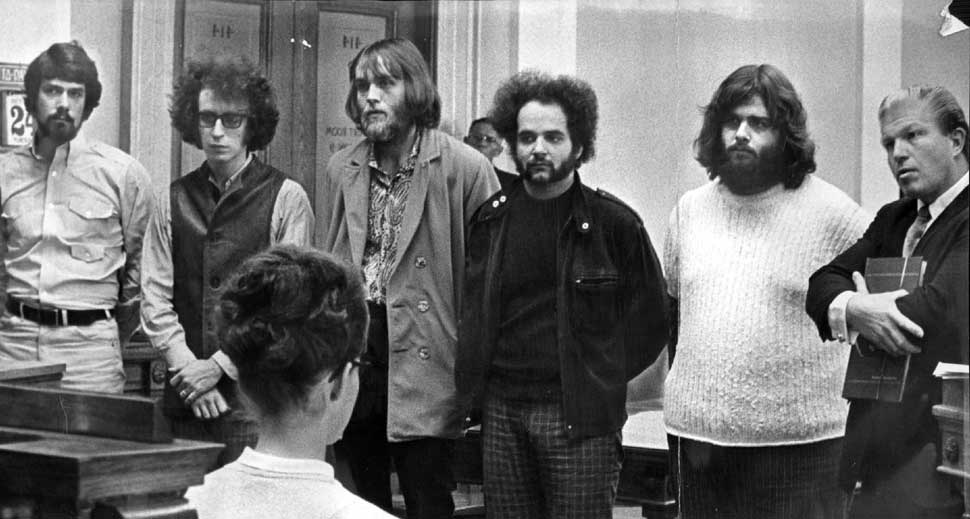
Two months later, in December 1967, Fito de la Parra replaced original drummer Frank Cook, and the classic Canned Heat line-up was complete.
Fito recalls seeing Wilson onstage for the first time. “I thought, ‘What is this little nerd doing with these guys?’ I watched him, and he stood stock still, not smiling, just very disconnected. His glasses were held together with Scotch tape. But then all this beautiful music came out of him. The disappointment was overtaken by the realisation that he was a musical genius. Once you heard him play the harmonica, you were transfixed.”
Fito joined at the right time. The band’s second album, Boogie With Canned Heat, was a step up from their debut. It featured mostly original material, including My Crime – inspired by the Denver bust – and cautionary drug song Amphetamine Annie, an ironic theme with hindsight.
But the album’s stand-out track was On The Road Again. Sung by Wilson in a spectral falsetto in tribute to one of his heroes, Skip James, it was both earthy and otherworldly. Ostensibly a standard blues lament, it also detailed his complex emotional state. When Wilson sang ‘my dear mother left me when I was quite young’ in that strange, keening voice, he wasn’t approximating someone else’s blues – he was singing about himself. His parents divorced when he was four; something that would torment him for the rest of his life.
Everyone who knew him says that Wilson was a distant, solitary figure who wasn’t cut out for rowdy band life. “As a kid Alan was shy,” Bob Hite told Rolling Stone in 1970. “His father’s a radio ham and he tried to get him into that. No good. Then stamp collecting. Same thing. Alan’d go off to his room and stay there, playing records and reading books.”
Wilson never had his own place in California. He preferred to sleep outdoors, usually at Hite’s place. He cooked up rice on a Primus stove and pored over books on botany. He wrote papers on the fate of Californian redwoods and amassed collections of cones, leaves and soil samples which would spill out of his filthy clothes as he scurried around the undergrowth.
Hite recognised Wilson’s oddness as soon as he met him: “He was… weird. Funky and not taking care of himself, his clothes or his hair. My mother couldn’t believe him when I brought him to the house. Al never put it on. He was just like that. We’d go into a restaurant, I’d ask him what he wanted first and then order, because if there was something new on the menu, it would totally hang him up.”
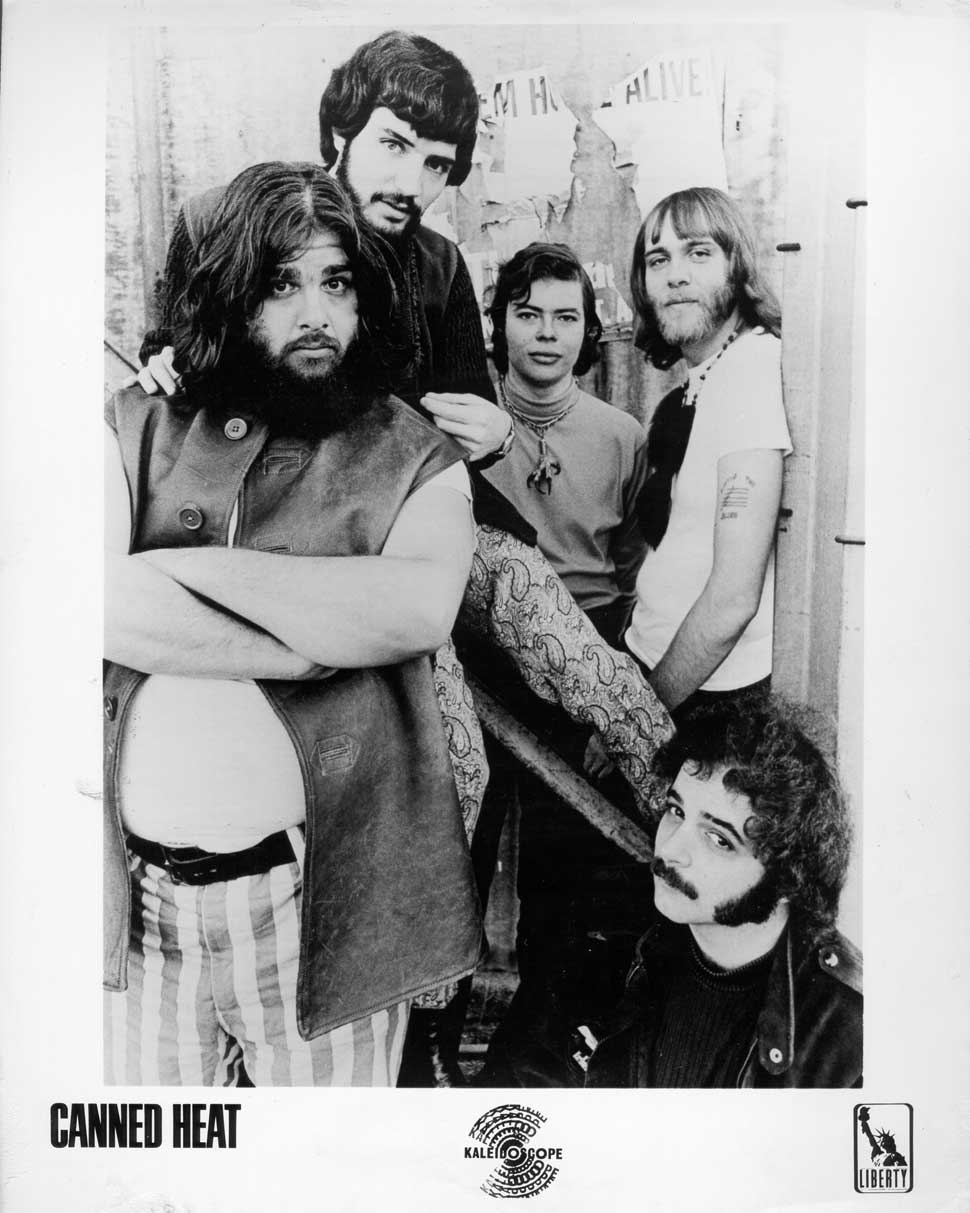
The Heat enjoyed the perks of success. They were hardly lookers, but that didn’t stop them being greeted by an endless parade of groupies, including such notable figures as The Butter Queen (immortalised in the Stones’ Rip This Joint) and Grand Funk Railroad’s favourite, ‘Sweet’ Connie Hamzy. And then there were the Plaster Casters, the Chicago duo famous for making plaster replicas of rock stars’ cocks. The pair, Cynthia and Dianne Plaster Caster, pursued guitarist Harvey Mandel, who joined Canned Heat in 1969. “Harvey wasn’t called ‘The Snake’ for nothing,” says Fito now.
However, while the others were busy fucking their brains out, Alan Wilson was communing with nature. “Alan was far more interested in birds and flowers than women,” says Skip Taylor. “He was extremely well-read and always had a pile of books with him. When everyone else was getting laid on tour, he’d be in a museum.”
Wilson’s cause with the opposite sex wasn’t helped by his lax personal hygiene. Frustrated, Taylor would attempt to clean him up so he looked – and smelled – more presentable.
“I’d go and buy him a fresh set of clothes, bathe him and dress him, and within minutes he’d be covered in dirt again,” Taylor says. “It was no wonder he had no success with ladies. One time I paid a female friend of mine to ‘look after him’ and she took him to her room. Two hours later she emerged and said, ‘Yeah, Skip, you’d better have your money back.’”
Bob Hite had little sympathy towards his bandmate’s problems with women. “I saw him call up a groupie once and invite her to a concert and to be with him all night,” The Bear said. “Then she split to go with another guy when they got back to the hotel. He cried real tears, over a groupie! So I know chicks were a big thing for him, but he never dug that if you brush your teeth there’s no bad breath – and girls dig that.”
There were now growing tensions between Hite and his bandmates. As genial as The Bear was, he could also be a bully. He ridiculed Henry Vestine’s attempts to shift the band’s music from blues towards psychedelic ragas. Worse, he frequently targeted Wilson, whom he considered a milksop. Given Wilson held the keys to the band’s entire sound, these barbs were hard to take.
“Bob Hite used to tell Al he sucked,” says Larry Taylor. “He’d be on at him: ‘Hey Alan, why don’t you sing on the vocal mic and not the harp mic? Use the fucking PA, man.’ He was kinda joking but he was also exasperated with Alan.”
The resentment spilled over when Henry Vestine was fired at a gig at San Francisco’s Fillmore West in summer 1969, just days before they were due to play the Woodstock festival. The zonked guitarist had explored so many off-key tangents that Larry Taylor’s patience snapped. The bassist stormed offstage, declaring: “I’m never playing with that fucker again!”
“He was pulling the band down to his level,” says Taylor now. “Drugs and success fucked him up. Henry was taking everything – lots of downers – plus alcohol. He’d often be half-asleep on stage or play in the wrong key. We were blowing our opportunity. You don’t get that too often and Henry’s attitude meant we were wasting our chance. I loved Henry, but he was a liability.”
By pure serendipity, Mike Bloomfield was in the audience the night Vestine was given his marching orders. Bloomfield was the hotshot guitarist who made his name with the Paul Butterfield Blues Band and as Bob Dylan’s sideman on Highway 61 Revisited. Canned Heat asked Bloomfield if he’d deputise. He declined, but pointed out that guitarist Harvey Mandel was also in attendance, and would make the perfect replacement for Vestine. Two days later, Mandel made his debut at New York’s Fillmore East, where Canned Heat headlined over Santana, Three Dog Night and Sha Na Na. Two weeks later, he was playing with them at Woodstock.
Canned Heat were scheduled to play the festival’s second day, the Saturday. But they were tired from touring, and in a bad mood. Fito, for one, didn’t want to perform. “We were sleeping in the cargo area of the airplane hanger,” the drummer says.
“I told Skip [Taylor] to leave me alone because I didn’t want to go to Woodstock.”
To make things worse, helicopters were supposed to take the artists to the festival site, but theirs hadn’t turned up. The band decided to take matters into their own hands. Spotting a ’copter full of news journalists, Bob Hite decided to commandeer it. “Fuck you, we’re going to make the news!” he roared. “We are the Canned Heat! It is more important that we get there than you so we’re taking this helicopter!”
The band made the gig intact and brought the party to the 400,000-strong crowd. In typical Canned Heat style, there were still issues. Filmmakers were there to document the day, but the Heat never made it into director Michael Wadleigh’s original 1970 Woodstock movie due to a dispute over royalties; although they subsequently appeared in the director’s cut.
By this point, it didn’t really matter. Canned Heat had reached their zenith. 1968’s double album Living The Blues and the following year’s Hallelujah were both coherent and commercial. Liberty paid for specialist sidemen too. Dr John provided piano and horn arrangements, while guitarists John Mayall and Alan Wilson’s old friend John Fahey added extra colour. Arguably the most significant guest was session sax player Jim Horn, who added the distinctly double-tracked flute solo to Going Up The Country, the Heat’s 1968 reinterpretation of Henry Thomas’s Bull Doze Blues. The song would give them the biggest hit of their career, going Top 20 in the US and the UK.
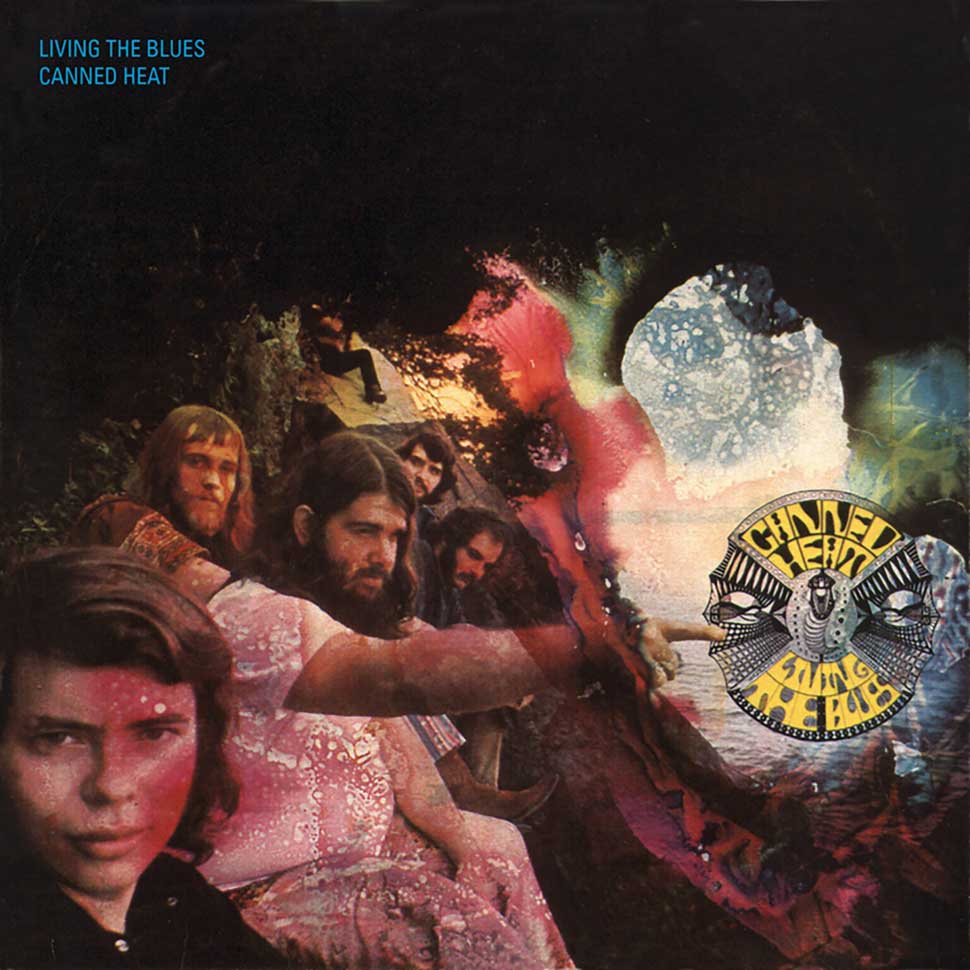
Yet despite their success, Alan Wilson was beginning his descent into a downward spiral. The loss of Henry Vestine was part of the problem. Wilson loved being in a band with Vestine, and didn’t much care for Harvey Mandel. But there were bigger issues at play.
“Al was living with me and my wife,” Hite told Rolling Stone in 1970. “He started comin’ around real nice until six months ago. Then he stopped rappin’ and laughin’. Everything got him uptight, the smog in LA, what people were doing to the redwoods… It all got right inside him. He said to me, ‘I don’t know what my problems are anymore. It’s a drag gettin’ up every day.’”
Wilson began to withdraw from his bandmates, writing songs that hinted at both his departure and his increasingly fragile state of mind: My Mistake, Change My Ways (‘I’m so, so tired of sleeping by myself’), the bitterly paranoid Get Off My Back, which seemed to partially be aimed at his de facto landlord Hite (‘When I visit my baby we’re not alone… you’re there, you listen’).
According to Bob Hite, Wilson attempted suicide twice. “One night he walked out of the Topanga Corral [club] with a half pint of gin,” Hite later recalled. “He’d stashed fifty reds [barbiturates] somewhere and he figured he’d do it, commit suicide, that way. But someone’d stolen the reds. The next day he wrecked his van, but with not a scratch on himself. He was so disappointed.”
Skip Taylor had Wilson committed to a psychiatric hospital. When he re-emerged, he joined the band for another tour, only to quit in South Carolina. He soon returned, asking if he could play with them again. “We said ‘sure’,” recalled Hite, “and he was going to make the European tour.
On August 1970, Canned Heat played the Marco Polo Resort’s Hump Club in Miami, Florida. Jim Morrison was in attendance, celebrating the end of his infamous court appearance for supposedly exposing himself on stage. Morrison and his old friends jammed on four songs, including Howlin’ Wolf’s Back Door Man, which The Doors had covered on their first album. Afterwards, Morrison and Wilson sat together at a table and held an earnest discussion about the blues. The singer respected Wilson, maybe recognising a kindred troubled soul.
In early September, Canned Heat were due to leave for a European tour, which started with a festival appearance in Berlin. “Two days before we left for Europe I told Al to make sure his clothes were washed for the tour,” recalled Hite. “Then he disappeared, which wasn’t unusual. Nobody knew where. We looked and looked… Our plane was leaving… We took it without him. In Berlin they told us they’d found him dead on the hill, with four reds on him.”
It was Skip Taylor who found Wilson’s body on September 3, 1970. The manager had been sent to look for the guitarist as the others were boarding the plane. Hite later claimed he’d found the body, not Taylor. “He didn’t,” counters Fito de la Parra, “because Bob was too fat, too lazy and too stoned to bother looking for Alan.”
Taylor discovered Wilson in a sleeping bag, a few yards from the back door of Hite’s house. His right arm was across his chest. Next to his head were those four ‘reds’ – barbiturates. He hadn’t left a note. The scene had echoes of Wilson’s song My Time Ain’t Long, where he sang, ‘Don’t the moon look pretty, shining down through the trees.’
“He was smiling and looking at the sky,” says Skip Taylor now. “He looked happy.”
The final Canned Heat album proper to feature ‘Blind Owl’ was Future Blues, released a month before his death. Inside the gatefold sleeve was a short essay by Wilson entitled Grim Harvest, about the Giant Redwood, the tallest living thing on the planet. It painted a pessimistic picture: “Where there were once two million trees the remaining 125,000 acres are being ‘harvested’ (as the lumbermen put it), for uses that other trees could easily fulfil. At the current rate of ‘harvest’, these remaining acres will be cleared within the next ten years.”
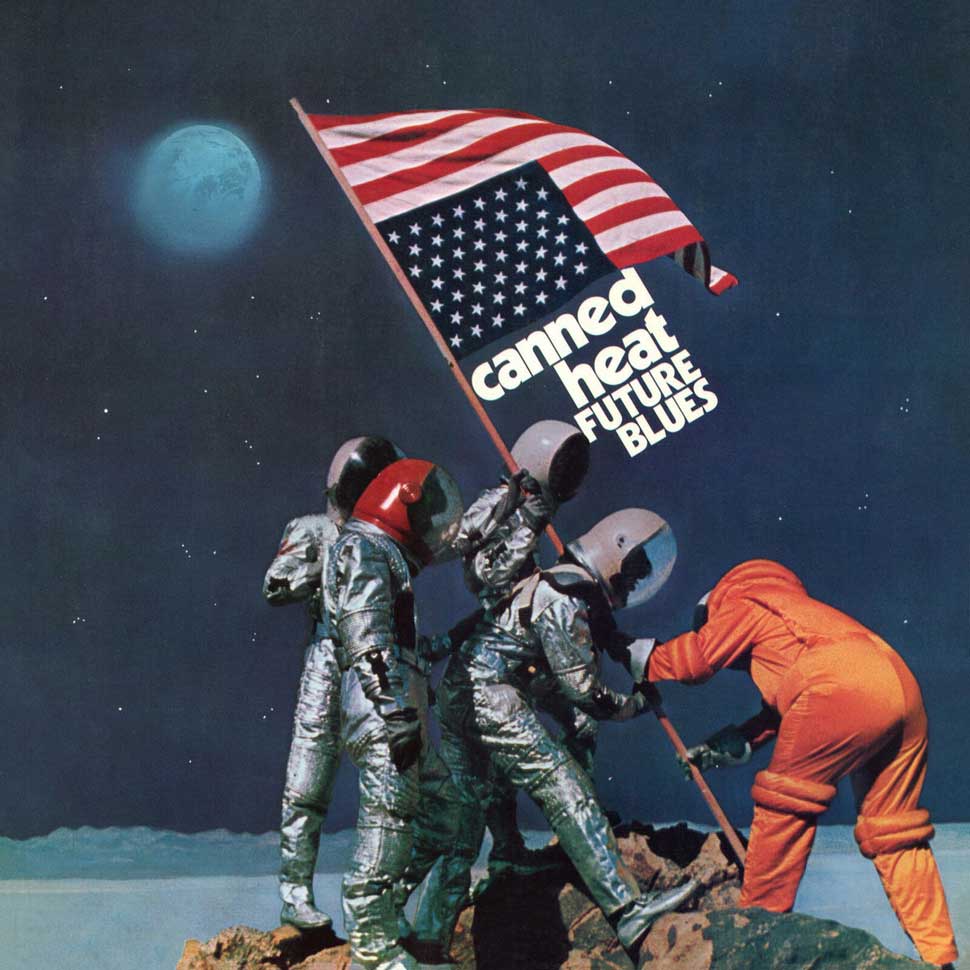
Some believe that impending eco-disaster that hastened Wilson’s demise, though undiagnosed depression may well have also played a huge part. “I wasn’t surprised to find Alan dead because we’d had him committed to sort himself out and he never did,” says Taylor. “The band were tired of his depression. No one understood what that meant back then.”
Alan Wilson was 27 – the same age as Brian Jones, who had died in July 1969, and as Jimi Hendrix and Janis Joplin, who would die within a month of him. Alan’s father came to identify his body in the morgue, and broke down; something Taylor puts down to the bad relationship he’d had with his son. When they pulled Wilson’s body out of the cabinet, even the manager was shocked. “The old Alan was gone; it was just a body. His life and soul had vanished.”
The coroner’s report said the death was accidental, putting it down to acute barbiturate poisoning. “Maybe it was,” says Taylor. “But I believed it was a form of slow suicide. He was so hung up on what he thought was ecological disaster that he lost the will to live. At least he was around to partake in the Heat’s success – but it didn’t bring him any comfort. He enjoyed recording and arranging but he hated touring.”
The last album Wilson played on was Hooker ’N Heat, a collaboration with John Lee Hooker. The veteran bluesman considered the younger musician to be “the greatest harmonica player who ever lived.” Indeed, Wilson had been so obsessed with the instrument that he used to stick Kleenex up his nostrils, so he didn’t lose any air when he was blowing his harp.
Alan Wilson was certainly a visionary, and he loved being in the group he founded. But it seems he was getting ready to give Canned Heat notice at the time of his death.
“He had a lot of music inside him that wouldn’t have fit with what Canned Heat was doing,” says his old friend Barry Hansen. “One of the key trends in late 1960s music was bringing disparate idioms together, and Alan was a master of that.”
For Bob Hite, his bandmate’s problems were more personal. “Maybe he was in the wrong business,” Hite subsequently said. “He tried [killing himself] three times. He finally made it.”
Wilson’s death didn’t stop Canned Heat, at least not immediately. If they were grieving, they played through it. The gig in Berlin for which he missed the flight still happened, as did a free show in London’ Hyde Park the day after Wilson was cremated.
But the rest of the 1970s were bleak for Canned Heat. Wilson was replaced by Joe Scott Hill, but without their musical talisman, the music they made suffered as their pharmaceutical intake continued unabated. “We played with the MC5 in Detroit in 1972,” recalls Fito, “and we took so many drugs – speed and cocaine and heroin – the first set was remarkable, the second was shocking.”
The Heat carried on releasing albums to increasing disinterest: 1971’s Historical Figures And Ancient Heads, their first album without Wilson; The New Age and One More River To Cross, both from 1973. Henry Vestine had returned for the Hooker ‘N Heat album after Larry Taylor and Harvey Mandel quit, but he was in awful shape. Vestine began hanging out with Charles Manson’s acolytes and boasting of his affiliation with the Manson Family.
They were still a fearsome live band, and their reputation meant they could play prestige shows at such hallowed venues as London’s Rainbow and San Francisco’s Winterland. But Skip Taylor couldn’t sustain the band. He’d lost his enthusiasm for accompanying them to one lousy gig after another. He parted ways with Canned Heat in 1973. Hite attempted to manage the group after Skip’s departure, but as Fito says, “he wasn’t exactly a graduate from the Harvard School Of Business. Our finances were dreadful.”
Worse, promoters were becoming tired of Hite’s increasingly erratic behaviour and Vestine’s entourage of Hells Angels. The biker fraternity had adopted Canned Heat, especially in Australia and New Zealand, but the chaos and criminality that came with it wasn’t conducive to a career in an increasingly sophisticated music business.
Even The Bear’s precious record collection disappeared. An earthquake caused his home to flood and sent his beloved 78s bobbing down the street. By the end of the 70s, the Heat hadn’t delivered a hit in nearly a decade, and had no safety net to cushion their fall. “The band had become a front for criminal enterprises, from dope smuggling to armed robbery, falling in with remnants of the Manson Family,” says Skip Taylor. “They blew one comeback or another, descending into poverty.”
Taylor read about Bob ‘The Bear’ Hite’s death in a newspaper while serving time in a California jail for possession of cocaine with intent to traffic. He wasn’t surprised, just as he hadn’t been surprised at Alan Wilson’s demise 11 years earlier.
Despite his band’s success just over a decade earlier, Hite died in poverty. “He didn’t have the money to keep his electricity on,” says Fito. “Susan drove him insane, so his death was a kind of suicide.”
The final indignity came when Hite’s brother Richard, who played bass with the band in the 70s, sold off the remnants of The Bear’s record collection to finance his own habit, just months after his death.
More than 40 years after their peak, Fito de la Parra maintains Canned Heat were cursed. “We were ill-fated,” he says now. “After Alan and Bob died it was Henry. He returned to the group but he was a wreck. I saw him pull his teeth out of his skull and weep.”
Fito took over management once Hite and The Push were gone. Since then, he has seen innumerable line-up changes and five more deaths. One of these was Henry Vestine, who died in a Paris hotel room in 1997. Vestine had gone slowly mad, and, according to Fito, had even joined the Ku Klux Klan in the 1980s; the ultimate irony for a musician who made his living playing the blues.
The story of Canned Heat, and especially that of Alan ‘Blind Owl’ Wilson and Bob ‘The Bear’ Hite, is one of music’s great cautionary tales. Sure, they made some tremendous music – which Fito and Harvey Mandel still play in the band’s current incarnation – but it stands in the shadow of the chaos that followed them around. Or maybe that’s the point – that Canned Heat were blues outlaws, just like the men who inspired them.
“Yeah, we were always badass, if by that you mean sex, drugs and rock’n’roll,” says the drummer. “We were very bad. Extremely bad. Bob Hite used to say, ‘If I hadn’t been a musician, I’d have been a criminal.’ We were proud to be outlaws.”
This feature originally appeared in Classic Rock 206 (January 2015). Harvey left the band due to health issues in late 2014. The band's most recent album, Final Vinyl, was released in 2024.
